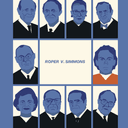A recent study conducted by Professors Glenn Pierce and Michael Radelet published in the Lousiana Law Review showed that the odds of a death sentence in parts of Louisiana were 2.6 times higher for those charged with killing a white victim than for those charged with killing a black victim. The study examined 191 homicides in East Baton Rouge Parish between 1990 and 2008 involving a charge of first-degree murder. Even after considering other variables such as the number of aggravating circumstances, the number of concurrent felonies and the number of homicide victims, the odds of a death sentence were 97% higher for those whose victim was white than for those whose victim was black. The authors of the study suggested that one reason why the victim’s race was an important factor was because “prosecutors’ offices, jurors, judges, investigating police officers, and others involved in constructing a death penalty case are (consciously or unconsciously) not as outraged or energized, on average, when a black is murdered as when a white is murdered.” The authors said “death penalty cases are expensive, and choices need to be made on how often the death penalty can be sought and in which cases” and that “the social status of the victim and the family of the victim, including his or her race, increases [a case’s] importance.”
(G. Pierce and M. Radelet, “Death Sentencing in East Baton Rouge Parish, 1990 – 2008,” 71 Louisiana Law Review 647, 671 (2011)). See Studies and Race.



